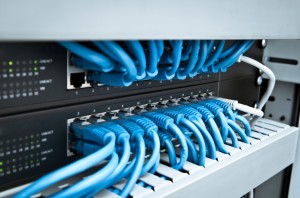Master Clocks vs. NTP Servers: What’s the Difference?
Not sure whether your clock system needs a master clock? Wondering why you shouldn’t just use a NTP server? These are both valid questions when choosing an appropriate time resource for your facility. The fact of the matter is they both work best when used together. Let’s explain how both devices work and their technology to better understand them.
An (S)NTP Server:
A Network Time Protocol (NTP) server is a reference time server used in a network for the management of precise time to various system devices. The server recognizes all Ethernet devices that request a time source and ensures that the time is distributed properly from machine to machine. In this way every piece of equipment over the network infrastructure with a time display and Ethernet connection will remain uniform and match each other. These servers are internal to a facility and require no breach of a firewall to receive time. When used alone without a master clock, an NTP server solely conveys time to Ethernet devices.
A Master Clock:
A master clock, on the other hand, does more than convey time to Ethernet devices. It also has the ability to distribute time to multiple different clock systems or retrofit with existing clocks systems through its programmable relays. In addition, a master clock is capable of scheduling various incorporated systems to shut on and off at desired times automatically. All settings of the master clock can easily be configured through an easy-to-use web interface via an internet capable device. Additional functions not present in an NTP server include Daylight Saving Time changes, 12 or 24 hour formats, and the possibility of adding a countdown feature.
When you put them together:
Aside from their differences, a master clock and NTP server actually have the ability to work with each other to provide an even better timing solution for a given facility. When the two are paired together, the master clock will receive accurate time from the NTP server to distribute to all clocks in its system, while the NTP server will sync all networked devices to the same time it provides for the master clock. Combining both the capabilities of a master clock and an NTP server ensures that every clock, computer, printer, and any other device with an Ethernet connection will display the exact same time, all while having the added features of a master clock. By implementing both of these devices, you can rest assured that you will be maximizing the use of synchronized time in your facility.

